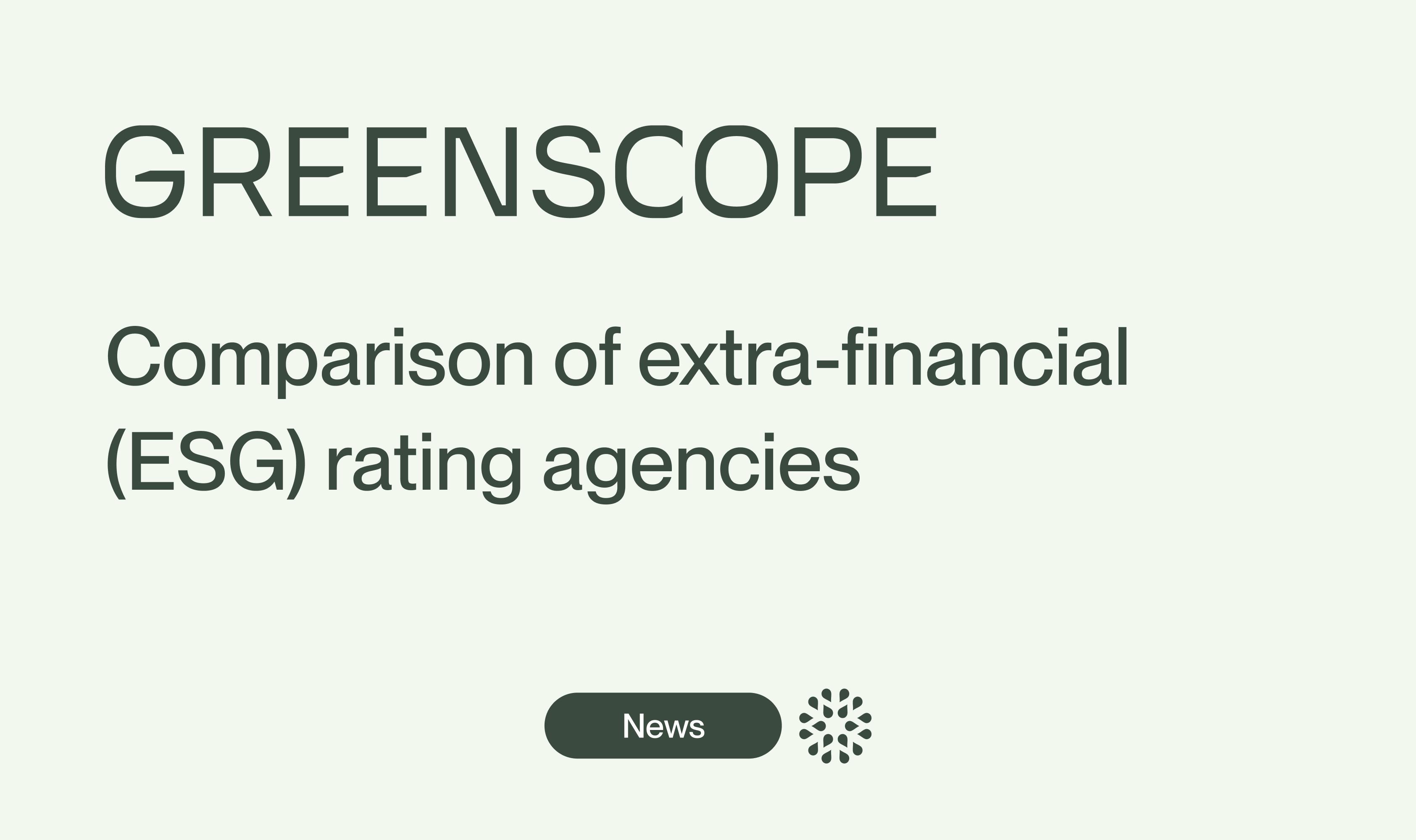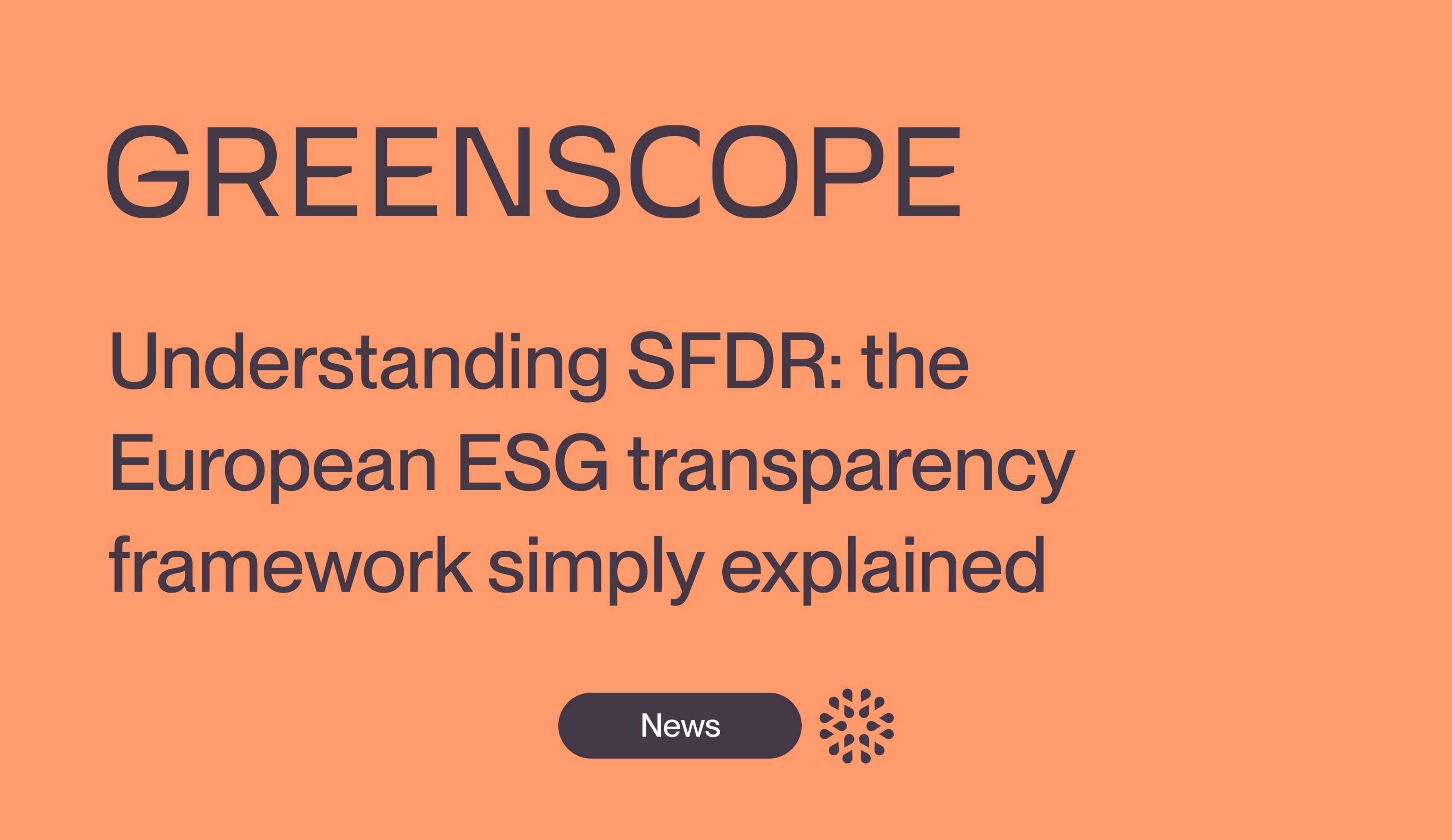Comparison of ESG rating agencies: role, methodology, and key players
ESG ratings now shape investment decisions. Learn how extra-financial rating agencies assess sustainability-related issues.

The extra-financial rating, or ESG rating, is an evaluation that measures the sustainable performance of an economic actor — that is, its ability to manage risks and opportunities related to Environmental, Social, and Governance (ESG) factors.
Complementary to financial ratings and carried out by specialized rating agencies, it now influences investor perception and capital allocation.
What is an ESG (extra-financial) rating agency?
Understanding ESG extra-financial ratings
An extra-financial rating measures how a company or issuer integrates sustainable development, social responsibility, and good governance into its activities.
It is based on an in-depth analysis of internal policies, public reports, key ESG performance indicators, and information gathered from public or self-declared sources.
Main indicators analyzed:
- Environmental (E): carbon footprint, energy mix, waste management, biodiversity impact, sustainable investments.
- Social (S): working conditions, gender equality, health and safety, diversity and inclusion policies.
- Governance (G): board independence, transparency, responsible purchasing policies, value distribution.
💡 Objective: identify ESG risks likely to affect economic performance in order to guide investment decisions or adjust companies’ ESG strategies in response to market developments.
ESG ratings vs. sustainability indices
ESG ratings assess the performance of individual entities, while sustainability indices (such as DJSI or FTSE4Good) group together companies that meet defined sustainability criteria.
Examples of key reference indices:
- DJSI (Europe)
- FTSE4Good (Global & Europe)
- Bloomberg Gender Equality Index
- Refinitiv Diversity & Inclusion Index
- Euronext Vigeo Europe / Eurozone
- MSCI Low Carbon Leaders Index
Inclusion in these indices generally requires a strong ESG rating from one or more agencies (e.g., S&P Global CSA).
Role and functioning of ESG rating agencies
ESG rating agencies are independent organizations that evaluate companies’ ESG practices according to their own methodologies.
They collect and analyze ESG data from various sources, including:
- Annual reports and public documents
- Questionnaires submitted to companies
- Specialized databases and media sources
ESG ratings help investors manage risks and opportunities, allow companies to benchmark their ESG performance against peers, and support banks and asset managers in making informed allocation decisions.
📅 Ratings are generally updated annually, with interim adjustments following major events such as controversies, governance changes, or regulatory developments.
Comparatif des principales agences de notation extra-financière
MSCI ESG Ratings
- Origin: United States
- Scale: From AAA (best) to CCC (lowest)
- Target audience: Institutional investors and asset managers
- Methodology: Based on an assessment of material ESG risks and opportunities likely to impact financial performance. The main objective is to measure a company’s ESG resilience in the face of sector-specific challenges
Morningstar Sustainalytics
- Origin: Netherlands / Canada
- Scale: From Low to High, represented by 1 to 5 globes
- Coverage: Over 10,000 companies
- Focus: Primarily targets investment funds and evaluates the effectiveness of the companies held within a portfolio in managing ESG risks and opportunities, comparing them with at least ten similar funds in the same category
- Methodology: Based on public data — annual reports, media sources, corporate websites, and specialized databases
ISS ESG Corporate Rating
- Origin: United States
- Scale: 12 levels, from A+ / 4.00 (excellent) to D- / 1.00 (poor performance)
- Purpose: Provides a precise indication of the ESG risk and opportunity level of a company or portfolio by assessing its ability to manage risks, mitigate negative impacts, and generate positive outcomes for society and the environment
- Methodology: Relies on internationally recognized standards such as IFRS, ESRS, and GRI indicators, and draws from a wide range of public data (annual reports, media, corporate websites, specialized databases) to ensure rigorous and comparable evaluations
- Coverage: Approximately 7,300 companies
S&P Global CSA (Corporate Sustainability Assessment)
- Origin: Switzerland / USA
- Background: Initially designed to help companies benchmark their ESG performance and compare themselves to peers, the CSA is now increasingly used by investors to evaluate ESG performance within portfolios and adjust asset allocation
- Scale: 0–100 scale, with percentile rankings positioning each company within its sector
- Methodology: Based on in-house data collected through 62 sector-specific questionnaires covering 110 questions across 23 sustainability topics (governance, climate, resources, innovation, etc.). This proprietary methodology feeds several S&P ESG indices, including the S&P Global LargeMid Cap Index, S&P 500 ESG Index, S&P Global 1200 Index, and S&P 500 Scored & Screened Index
- Coverage: Around 3,600 companies (as of 2022)
CDP Score
- Origin: United States
- Scale: Three thematic scores, rated A to D, reflect the level of disclosure and action on climate (Climate Change), forests (Forest), and water security (Water Security) issues
- Focus: The CDP Score differs from traditional ESG ratings — it does not measure ESG performance or risk management but assesses a company’s transparency and quality of environmental reporting regarding its commitments and impacts
- Methodology: Calculated from in-house data gathered via standardized questionnaires sent to companies, measuring the consistency and maturity of their environmental reporting
- Coverage: Approximately 22,700 companies
Moody’s ESG Solutions
- Origin: France / United Kingdom
- Focus: Primarily used by lenders and financial institutions to assess ESG risk exposure among credit issuers
- Scale: Five-level score, from CIS-1 (positive impact) to CIS-5 (very strongly negative impact), reflecting how ESG considerations influence credit quality
- Output: Produces detailed risk profiles for each private issuer, with separate scores for each ESG pillar — E (Environmental), S (Social), and G (Governance)
- Coverage: Around 1,700 issuer profiles (2022)
Other Agencies
Depending on sector, company size, or specific needs, other specialized ESG rating providers include:
- Inrate
- Ecovadis
- Solaron ESG Tracker
- and others
How do agencies evaluate extra-financial performance?
Each agency uses a proprietary methodology combining several data sources:
- Public data (reports, studies, surveys, media controversies)
- Information from specialized databases
- Questionnaires sent to companies, often tailored to specific sectors
This diversity of approaches can sometimes lead to rating discrepancies for the same company, creating challenges of transparency and comparability for investors.
Limits and challenges of ESG ratings
Despite their value, ESG ratings present several limitations:
- Lack of standardization: each agency applies its own methodology
- Partial transparency: weighting criteria are not always disclosed
- Inconsistent results: a single company can receive very different scores depending on the agency
- Risk of “greenwashing”: if published data are not independently verified
💬 Key challenge for investors: learn how to interpret ESG scores, cross-check multiple sources, and prioritize agencies whose methodologies align best with their ESG priorities.
Conclusion: how to use ESG ratings effectively
Extra-financial ratings have become a strategic tool for guiding investment decisions and assessing portfolio sustainability.
However, their methodological diversity requires a critical and informed approach:
- Identify the most relevant agencies for your industry
- Understand the underlying ESG indicators behind each score
- Use ratings as a decision-support tool, not as an absolute measure
🧭 By combining insights from multiple sources — such as MSCI, Sustainalytics, ISS ESG, and S&P Global CSA — investors can build a more comprehensive and nuanced view of an asset’s sustainable performance.
Our latest articles

EDCI - Understanding the ESG Data Convergence Initiative to harmonize ESG reporting in Private Equity
Simplify and standardize your ESG data with EDCI.

Understanding SFDR: The European ESG transparency framework made simple
Understanding SFDR means understanding what structures sustainable finance in Europe. Requirements, tools, impacts: let's break it down.

CSR News - November 2025
Discover key developments: ongoing projects, standards updates, new official documents.

Comparison of ESG rating agencies: role, methodology, and key players
ESG ratings now shape investment decisions. Learn how extra-financial rating agencies assess sustainability-related issues.



